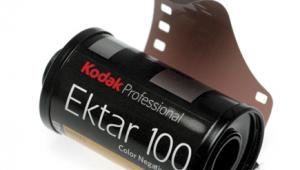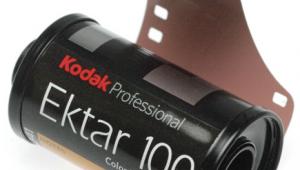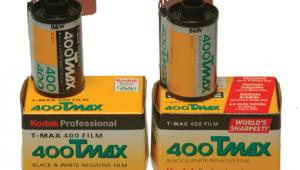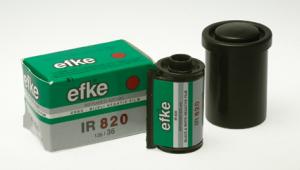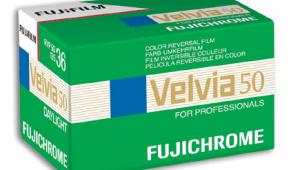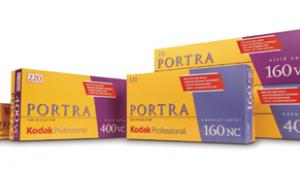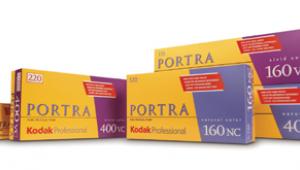Kodak’s Revised T-Max 400; A “Classic” Gets A Facelift Page 2
On such a day, if you spot meter the darkest shadow in which you want texture and detail, you can use the full ISO speed or something very close to it. Use a broad-area meter (including in camera meters), favoring the shadows, and you may well need to lower the EI on your meter by 1/3 to 2/3 stop. Cease to favor the shadows and you may need another 1/3 to 2/3 stop again. Switch to incident light metering, and you will be lucky to get good shadow detail with an ISO 400 film at EI 200. This is why ISO speeds are infinitely better than the Bad Old Days when film speeds were set by the marketing department or by enthusiastic but not terribly methodical amateurs and journalists.
It is also worth remembering that with conventional (non-chromogenic) black and white films more exposure translates directly into more grain and less sharpness; as, too, does more development. This is why some people rate 120 film slightly slower than 35mm, and some develop it for slightly longer. The quality losses with 120, where enlargement ratios are smaller, are simply more acceptable than they are with 35mm. In other words, film speeds are a matter of compromise, and which compromise you choose is up to you.
Ruined Village |
|
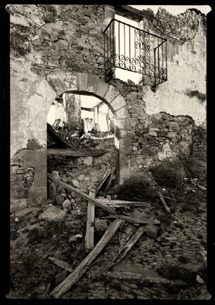 |
|
|
Scanning And Wet Printing
Different compromises are necessary according to whether you print your pictures
in the traditional "wet" darkroom, or scan them. With most film
scanners, there are much bigger penalties for overexposure and overdevelopment
than in the wet darkroom.
For wet printing, within reason, it is quite difficult to overexpose. Underexposed
negatives are tonally horrible, but sooner or later there is a huge jump with
a relatively tiny increase in exposure, no more than 1/3 to 1/2 stop. After
that there is a modest increase in tonal quality (in the opinion of most photographers)
for another stop or so. Then overall quality drops as grain gets bigger and
sharpness declines, without any improvement in tonality.
Scanning is another matter. Even slight overexposure or overdevelopment can
result in areas of film too dense for the scanner to penetrate, leading to irretrievably
"blown" highlights, and because of grain aliasing, there can be
a tipping point where grain suddenly gets far worse in a scanned image than
in a wet print. The finer grain of the new film is especially important for
this.
On the bright side, it is much easier to wring good tonality out of a "thin"
negative when you are using a scanner, so you will do well to keep both exposure
and development to the bare minimum needed to get readable shadow detail.
Passo |
|
 |
|
|
Is 400-2TMY The Film For You?
Only you can answer this question, and before anyone else can even begin to
offer useful advice, they need to know quite a lot about the kinds of subjects
you like to shoot and the way you work. After all, if there were one single
film that offered clear advantages over all the others, then all the others
would disappear from the market.
As it is, Ilford and Kodak each offer three different kinds of ISO 400 film,
cubic crystal (Tri-X and HP5), monodisperse (T-Max and Delta, which are significantly
different technologies), and chromogenic (T400 CN and XP2 Super). Each kind
has its passionate devotees, and photographers who migrate from one of the three
families to another are comparatively rare; rarer, quite possibly, than those
who migrate from one film manufacturer to another. All we can say, therefore,
is this.
If you have been using the earlier generation of T-Max, there seems to be absolutely
no drawbacks to the new film, as compared with the older version. As we said
earlier, it seems to do everything that Kodak claims, and more. This is, quite
simply, a better film than the old T-Max 400.
If you are thinking of migrating from another "family" (cubic crystal
or chromogenic) to monodisperse, there has never been a better time to try it.
Likewise for migrations from other manufacturers. With Agfa stocks all but exhausted,
many people are
looking for a new manufacturer. Do not dismiss Kodak.
That last sentence is sufficiently important that it is worth repeating. Do
not dismiss Kodak. They have certainly been known to send mixed messages about
their commitment to film: messages that sometimes seem to suggest they have
no interest whatsoever. Then they come up with something like TMY2.
For more information, contact Eastman Kodak Company, 343 State St., Rochester,
NY 14650; (800) 242-2424; www.kodak.com.
- Log in or register to post comments





